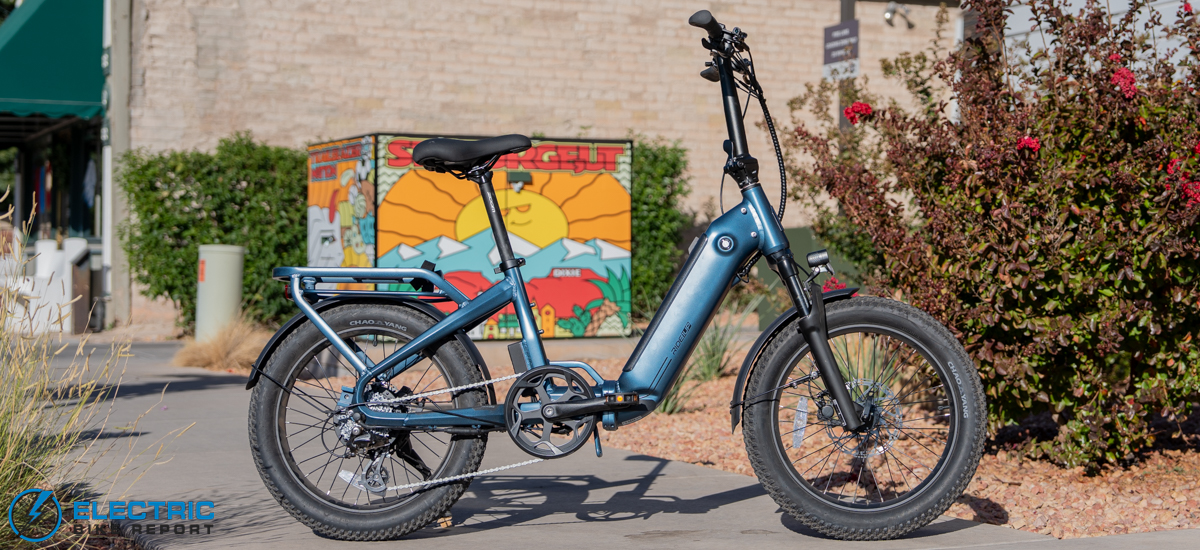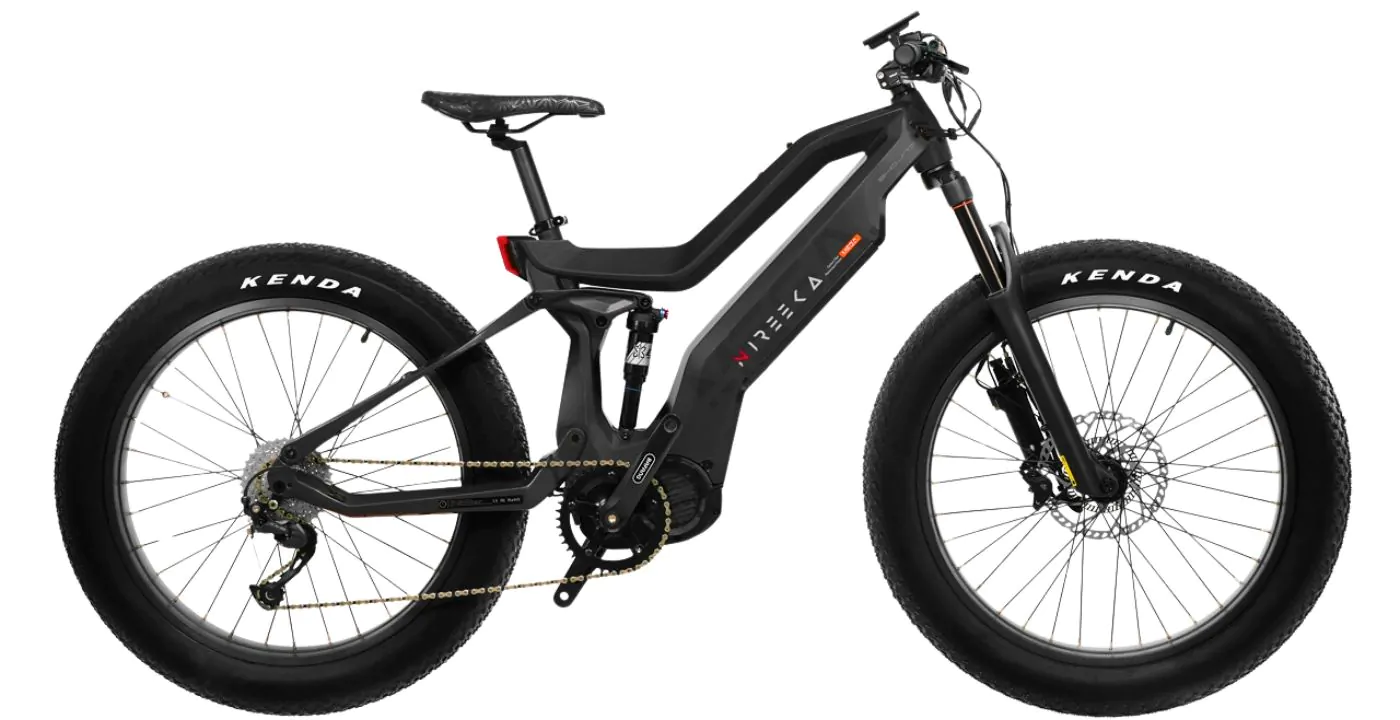Everything About Electric Bike: Checking Out Benefits, features, and advancements
Electric bikes, or e-bikes, represent a significant development in personal transport, blending typical biking with sophisticated innovation. They offer a variety of features, such as varying motor power and battery ability, tailored to meet diverse cyclist requirements. The benefits expand beyond mere ease, touching on wellness, cost-effectiveness, and ecological effect. Recurring developments in e-bike technology assurance to reshape the landscape of urban movement. As we discover the complexities of e-bikes, one may wonder: exactly how can these innovations transform the method we commute and involve with our environments?
What Is an Electric Bike?
Defining an electric bicycle includes understanding its fundamental elements and performances. An electrical bike, commonly referred to as an e-bike, integrates standard bike technicians with an electric propulsion system. This system generally includes a battery, a motor, and a controller, which operate in tandem to give assistance during pedaling.
The motor, typically located in the center of the wheels or installed on the framework, provides differing levels of power assistance, making it possible for cyclists to tackle slopes and longer ranges effortlessly. Best Electric Bicycle. The battery, an important aspect, stores power that powers the motor, and its capability straight affects the array and performance of the e-bike. Most e-bikes include a rechargeable lithium-ion battery, recognized for its effectiveness and long life
In addition, the controller controls the interaction between the cyclist's input and the electric motor's outcome, permitting a seamless riding experience. E-bikes may additionally consist of functions such as pedal-assist and throttle control, which give bikers with options for how they engage the electrical power. On the whole, electric bicycles represent a mix of typical biking and modern innovation, offering a lasting option for personal transport.
Key Features of E-Bikes
Electric bikes come furnished with a variety of vital attributes that enhance their use and charm. Among one of the most considerable parts is the electric motor, which varies in power result, typically varying from 250W to 750W. This motor provides aid to the cyclist, making pedaling much easier, particularly on slopes.

The control system, frequently consisting of a screen panel, enables customers to keep track of speed, battery degree, and support settings. Lots of e-bikes likewise feature pedal-assist and throttle modes, permitting bikers to choose their recommended degree of support.
Additionally, e-bikes are geared up with regenerative stopping systems that catch power during braking, enhancing battery effectiveness. Frame layout and materials differ, supplying alternatives for different riding designs, from traveler to mountain biking. Incorporated lights and safety features, such as strong brakes and reflective tires, add to a more secure riding experience.
Benefits of Electric Bicycles
The benefit and convenience of electric bicycles make them a significantly prominent selection for commuters and entertainment riders alike. One of the primary advantages of e-bikes is their capacity find more information to substantially reduce traveling time, particularly in urban settings where web traffic congestion prevails. The electrical aid allows cyclists to keep greater rates with much less effort, making everyday commutes more efficient.
Along with conserving time, electrical bikes promote a healthier lifestyle. They encourage exercise while minimizing pressure on the cyclist, making biking obtainable to a more comprehensive group, including those who may be prevented by traditional biking as a result of physical fitness levels or physical limitations.
E-bikes also offer financial advantages. They are commonly less costly to operate than automobiles, with lower upkeep expenses and no fuel expenses. Many areas give motivations for electric bike acquisitions, adding to their cost.
Ecological advantages are noteworthy. By encouraging biking over driving, e-bikes add to lowered carbon discharges and less traffic pollution, straightening with sustainable transport goals. Generally, the complex advantages of electric bikes make them an appealing choice for modern flexibility.
Innovations in E-Bike Technology
Current improvements in e-bike technology have changed the cycling experience, improving user, security, and efficiency convenience. Among one of the most considerable innovations is the growth of wise e-bikes outfitted with integrated GPS and mobile connectivity. These attributes permit users see it here to track their experiences, locate optimal routes, and even secure their bikes from another location, improving safety and ease.
Another significant advancement is the enhancement of battery technology. Lithium-ion batteries have ended up being lighter, more reliable, and efficient in longer arrays, resolving one of the main worries of e-bike individuals-- minimal range. Additionally, regenerative braking systems are currently being included, which reenergize the battery throughout descents, prolonging the bike's functional range.
Additionally, renovations in electric motor modern technology, such as mid-drive and center electric motors, offer much better torque and effectiveness, resulting in a more seamless riding experience (Best Electric Bicycle). Enhanced security attributes, including integrated lights, anti-lock braking systems, and sophisticated shock absorber, add to biker security and convenience on numerous terrains
Jointly, these innovations not just boost the performance of e-bikes however also advertise eco friendly transport, making them a progressively appealing option for commuters and entertainment motorcyclists alike.
Choosing the Right E-Bike
Selecting the ideal e-bike entails comprehending individual demands and preferences, particularly taking into account the innovations in innovation that have changed the market. When picking an e-bike, consider your key usage: commuting, leisure riding, or off-road experiences. Each category includes distinct layouts and specifications to deal with specific demands.
Next, examine the electric motor power and battery capacity. E-bikes commonly vary from 250W to 750W electric motors, impacting rate and hill-climbing capacities. Battery life is vital; a higher ability (measured in watt-hours) will certainly offer extended arrays, enabling for longer adventures without constant reenergizing.

Final Thought

Electric bicycles, or e-bikes, represent a significant advancement in individual transportation, mixing traditional cycling with sophisticated technology. An electric bike, commonly referred to as an e-bike, integrates standard bike auto mechanics with an electrical propulsion system. The majority of e-bikes feature a rechargeable lithium-ion battery, understood for its performance and durability.
E-bikes might also include functions such as pedal-assist and throttle control, which supply motorcyclists with options for how they engage the electric power. The diverse functions and advantages of e-bikes, incorporated with continuous innovations in innovation, strengthen their function as a sustainable and efficient mode of traveling.